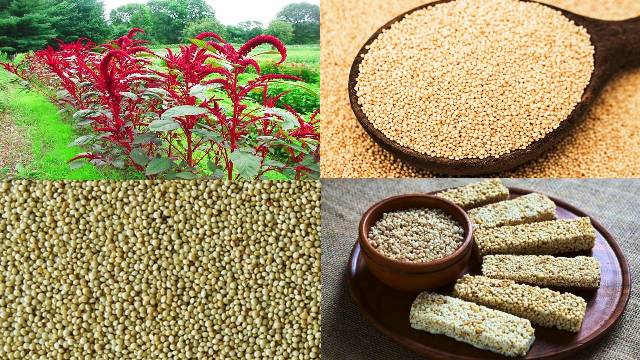Amaranth: The Ancient Superfood Grain
What is Amaranth seed?
Amaranth is basically a “pseudo-grain” which means its crop is non-grasses and its seed are come from bushes or shrubs of psueudo grain plant and its seed are used in the same manner as grains like quinoa grain and buckwheat grain. Amaranth Grain is one of the one of the oldest crop in this universe whose plant has been used as a multipurpose from it’s leafs as a vegetables and its seed as a grain in cooking purpose due to its high quality of protein, minerals, dietary fiber, lipid content & low source of starch or gluten content.. Pseudo grains seed are generally grounded into flour to make food or its seed can be directly used as a cereals.
Pseudo grains such as Amaranth, Quinoa, Millet, Wild rice & Buckwheat etc are superior to many cereal grains in several ways-
- Pseudo grains are higher in protein, Minerals, dietary fibre & lipid content as compare to cereal grains such as wheat , Rye, maize etc.
- Pseudo grains naturally does not contains any gluten that means its seed are gluten free.
- Pseudo grains are considered as healthiest food on earth that is the main reason it is commonly referred as “King seed” or “Seed send by God”
- Amaranth grain is easy to digest and in india it is mainly taken during fasting as it provide the much needed prime source of energy & strength to the body and keep afresh & energetic during fasting.
Picture of Amaranth plant & its seed:-
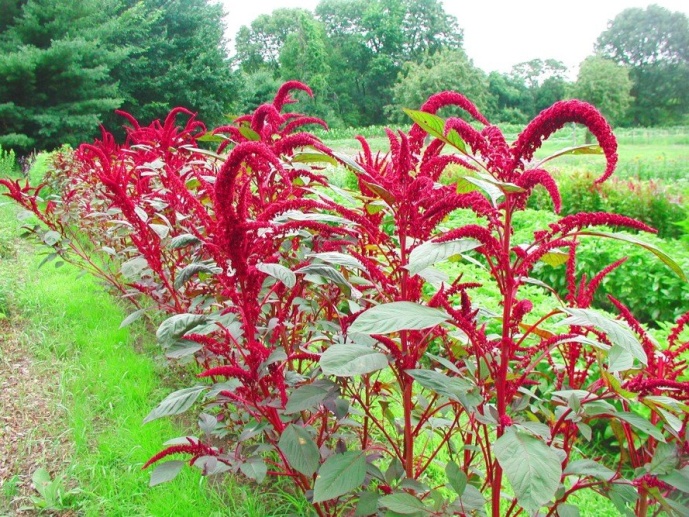

Pic source-heartbeetfarm.com
Amaranth seed are commonly known by several names in India & around the world:-
- In English:-Amaranth, Tassel flower (टेस्सल फ्लावर), Agrican spinach(अगरीकन स्पाईनेच)
- In Hindi:- Ramdana (रामदाना) or Choprasha (चौपरसा), Chaulai (चौलाई), Lal saag (लाल साग)
- In Sanskrit:-Kumarjiv (कुमारजीव), Rajdree (राज्रदि), Rajgiri (राजगिरि) or Rajshakani(राजशाकिनी)
- In Kashmiri: Bustan afroz (बुस्तान अफ्रोज़), Mawal (मवल्).
- In Bengali:- kaharbhoji (कहाराभोजी), Chuko (चूको) Natya (नत्या)
- In Gujrati:- Chuko (चूको) or Rajgaro (राजगारो)
- In Kannada:- Rajgiri (राजगिरि) or Chilikessopu (चिलिकेसोप्पु)
- In Tamil- Pungikorai (पुन्गीकिरेई)
- In Marathi-Bhaji (भाजी), Kahola (काहोला), or Rajagira (राजागिरा), Shravani Maath (श्रावणी माठ).
- In Arabic:- Hamam (हमाम)
- In Persian:- Angoza (अंगोजा)
About its Plant & its Type:-
Amaranths or Ramdana is is a popular group of short lived perennial flowering plant belongs to the family of “Amaranthaceous” botanically known as genus Amaranthus. The word Amaranth is derived from a Greek word-“ “amárantos” meaning Unfading flower. Amaranths is characterized by green or reddish flower arranged in dense cluster. Amaranths seed are not considered as a true grain or cereal because its plant does not belong to grass family but it is popularly known as “Pseudo-cereal” due to its flavour & appearance exhibits similarities to common grain like maize, wheat or Rye etc.
There are more than 50 species of amaranths plant found around the world commonly known for its usefulness and economic importance for its seed as cereals but many Amaranths plants are traditionally eaten as leafy vegetables & herbs.
Picture of amaranth leaf used as a vegetable in cooking. The leaves are nutritionally and culinary equivalent to those of spinach
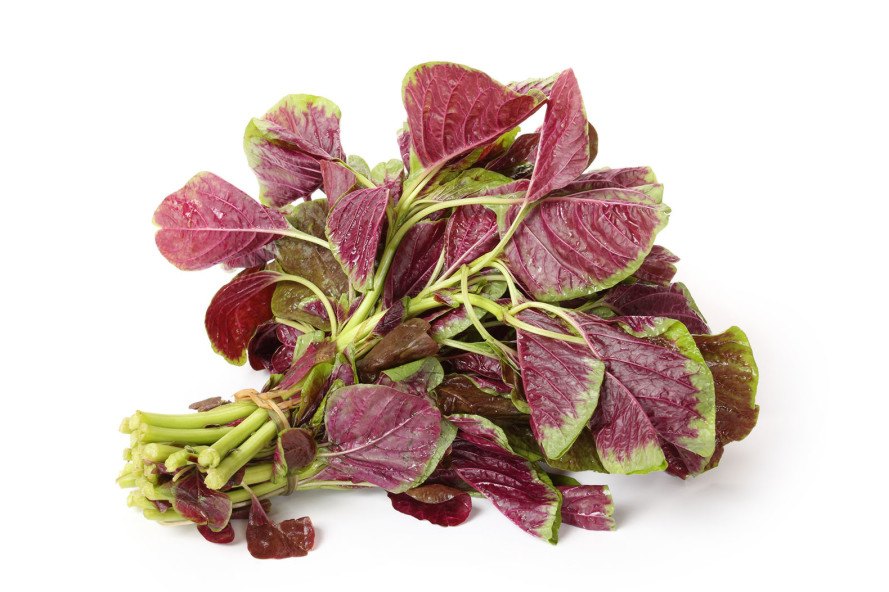
Amaranth plant has broad green leaves with bright purple or red flowers. There are basically 03 main spices of amaranth plant which are mainly grown for its edible seeds which are:-
Pic source-Crocus |  |
Its young green leaves are generally used as a spinach or Saag or vegetables in cooking. Pic source-Ken farm | 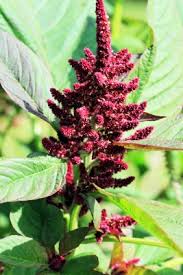 |
Pic source-Cambridge botanical garden. Note-The color of its leaf, flower & its stem can vary from spieces to spices. Their flower colors are generally ranges from white, green, pink, golden color to Deep red in color. | 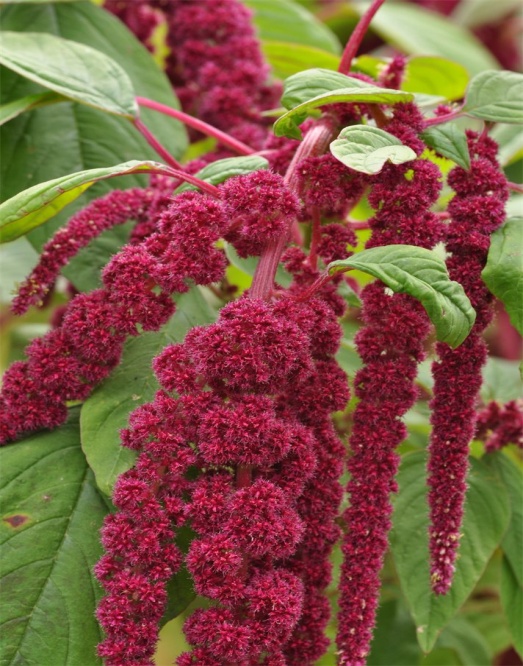 |
A brief history of Amaranths plant & its seed:-
The origin of the Amaranths plant belong to Mexico and it is believe that during the archaeological digging survey in the cave of Tehaucan, Puebla( Mexico) by the surveyer found that the origin of Amaranths domesticated are dated back to 6000-8000 years old. Amaranths grain were a staple food during the Mayan and Aztes civilization and considered native crop of Peru. The Aztes people not only they grown the Amaranths plant for their seed for food but also they used to eat it with honey as a part of religious ceremony or worship their GOD during fasting.
- After the Spanish people conquer the Mexico in the early 16th century, the production of amaranth crop almost disappeared from South American country & Mexico as a crop. Till then Amaranth had already spread around the world and established for food use of the grains & leaves in countries like Africa, India, Nepal & China etc.
- In India, Amaranths plant was possibly brought by foreign traders through the route of trade from Africa around 500years ago. It is commonly known in India as a Ramdana (रामदाना) , Choprasha (चौपरसा), or Chaulai (चौलाई) in Hindi. According to Ayurveda, Amaranths seed is regarded as a Satvik food due to its pure and healthy food. It is mainly grown throughout India mainly in the high slop of Himalayan region.
- In India, Amaranth are chiefly grown in the hilly Himalayan region from Kashmir valley to Bhutan as well as in south region of india such as Kerala, karanatak & Gujrat etc. In north India the amaranth seed are grown from September onwards whereas in south india it is harvested during August-september. When the seed are fully ripened from its flower cluster, it is cut from its plant and then allow to sun dried and crushed to extract its seed.
- Cultivation of amaranth grain are growing day by day in many countries worldwide due to its high demand as a healthy food because of rich in Nutrients such as protein, vitamins, minerals & gluten-free properties.
Picture of fully mature amaranth seed in its plant & ready for harvesting
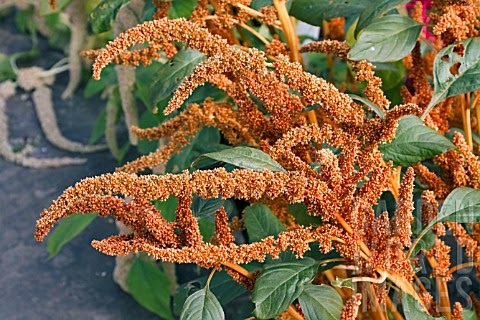

Pic source-The earth of India & the seed collection.
Characteristic of Amaranth seed:-
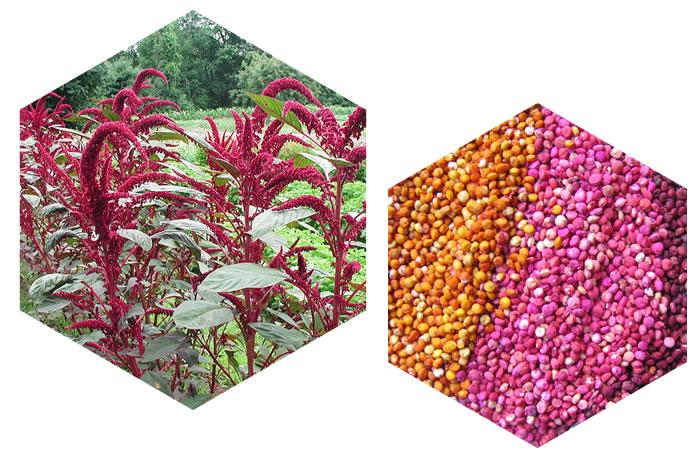
Pic source-saltspringseeds
- The shape and size of fully mature amaranth seed is nearly spherical and approximately 1 mm in diameter and its color varies from creamy yellow to light red in color. Amaranth seed are rich in protein, Minerals, dietary fibre & lipid content as compare to cereal grains such as wheat , Rye, maize etc.
- Amaranth seed contains globulin- and albumin-2-type proteins and unique combination of minerals such as Magnesium, calcium, Iron, phosphorous, potassium etc and balance of essential amino acids. Amaranth seed contains approx 14-18% protein depending upon the species and majority of which are globulin.
- Dried Amaranth seed are heated to popped up to use as a food or snacks. The popped up amaranth seed contains the same nutrients as Non-popped seed. There is No loss in Nutrients during popping of the seed.
Picture of Un-popped amaranth seed & popped seed
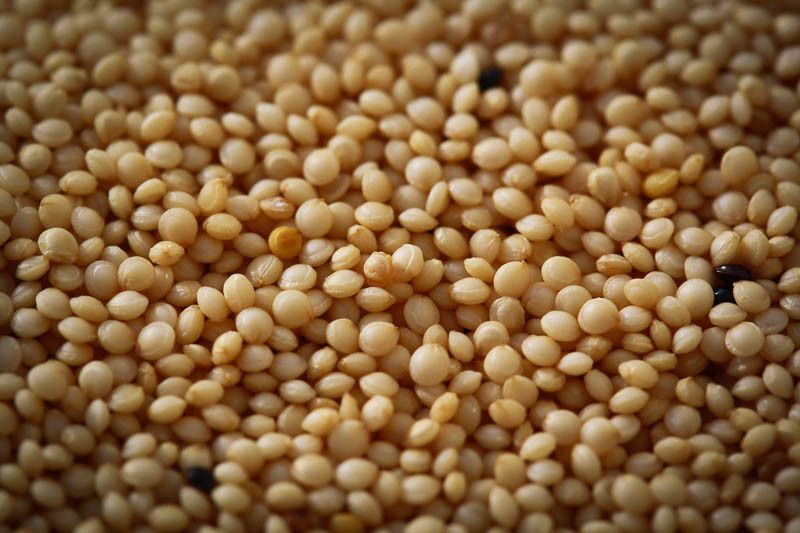
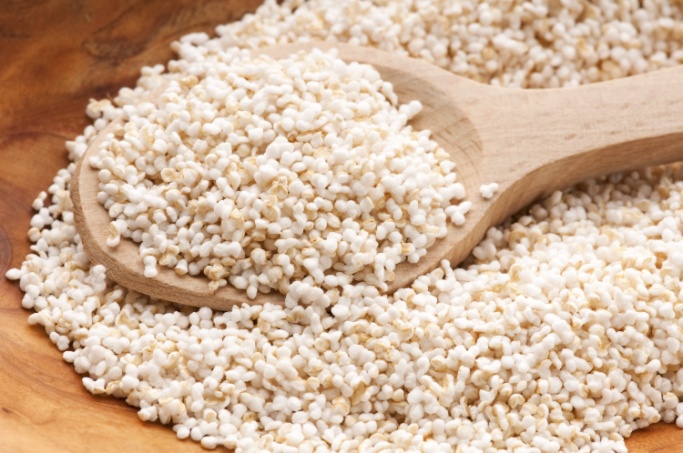
Pic
Pic source-Pinterest &Tess challis
Culinary use of Amaranth seed & its leaves:-
- Amaranth seed, leaf, stem & its oil all are used in many food application from cooking, popping, fermentation & extrusion etc. its seed can be eaten directly after cooking or boiling as same as dalia or porridge. Its dried seed are usually popped up by dry heat application such as dry roasting to impart nutty flavor and improve the palatability to use as a snacks & in sweets preparation. Its seed are used in many forms such as Fresh, dried, flaked, popped etc.
- The popped amaranth seed are used in the preparation of several bakery products such as biscuit & cookies, Cakes, several Indian sweets, mueslis & granolas. Popped amaranth seed are very soft in texture and can also be eaten as snacks or with milk.
- Due to non presence of gluten in amaranth seed, it is highly recommended to for manufacturing of gluten free cakes & snacks, several bakery products such as breads, cookies, salads, etc for healthy option to provide gluten free food.
- As a breakfast cereals:- amaranth seed has sweetness like characteristic therefore it is extensively taken as a breakfast cereals with milk or hot water or juice. It is generally eaten with honey, molasses or chocolate.
- It is used to make gluten free flour by grinding the amaranth seed into flour powder. In india its flour is commonly known as Ramdana flour and extensively used during religious festivals in fasting. Its flour can be used to make pasta, breads, paratha, Roti, chapatti & poori, pancakes , leavened farali dosa, etc
- Amaranth seed are generally combined with other healhy food items such as brown rice, mueslis, granolas etc. it can also be used to thicken the soup due to gelatinous characteristic.
- Amaranth popped seed are also used to make healthy salad such as peach & papaya salad with amaranth granola, couscous and amaranth salad etc.
- Amaranths seed are also used in the preparation of several kebabs & tikkies and healthy snacks and can also be used in stir fried vegetarian dishes.
- Amaranth flowers are versatile leafy vegetables that you can even turn into a delicious snack with a nutty flavor.
- Traditional food which is prepared with amaranth in country like mexico are:- Tamales, Tortilla & Atole, Alborto in Guatemala, bollos in Peru, Ladoo in India, Sattoo in Nepal etc.
- China also used this amaranth seed to prepare wide range of food products such as porridge, packaged dried noodles, cakes, biscuits amaranth yoghurt, amaranth taosu (sweet cake) and soya sauce made from combination with soyabean & amaranth seed.
- In Africa & south American countries amaranth leaves are extensively used and consumed as a leafy vegetables and also used to make soups.
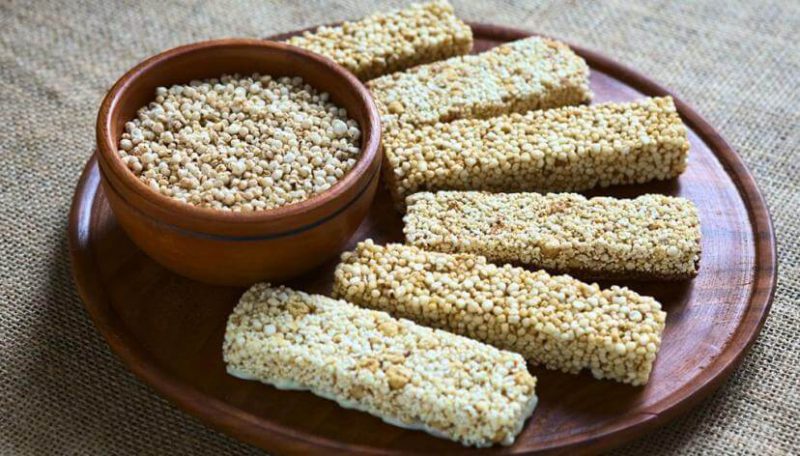
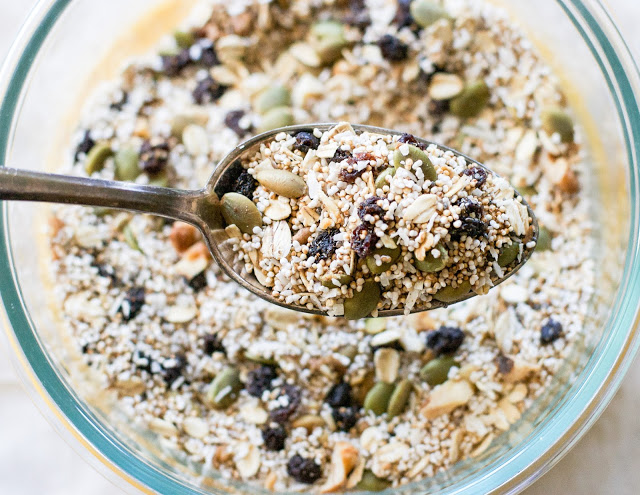
Pic source-caretas &poppiesandpapaya.com
Health benefit of Amaranth seed:-
- Amaranth seed is good sources of anti-oxidants such as gallic acid & vanillic acid which can promote health benefit and protect against harmful free radicals.
- Amaranth seed also have anti-inflammatory effect
- Amaranth seed can reduce bad LDL cholesterol level in our body and help in increasing good HDL cholesterol level. As per the research it has been found that food containing amaranth seed can able to reduce total cholesterol level upto 30% from our body however it can reduce bad LDL Cholesterol upto 70%.
- Due to high level of protein & fiber in Amaranth seed, it will able to reduce our weight.
- It is naturally gluten free grain which is highly nutritious and suitable for gluten free diet.
- the volatile oil found in amaranth seed are approx 5-9% of total weight of seed and its oil is basically squalene oil which is a fatty compound often used in the manufacturing of many vaccines.
Nutritional value of amaranth seed:-
- Energy- 371 Kcal
- Carbohydrate- 65 gms
- Protein- 14 gms
- Fat- 7gms
- Phosphorus -557mg
- Potassium-508mg
- Magnesium 248 mg
- Calcium-159 mg
- Iron-7.6 mg
- Zinc- 2.9mg
- Vitamin- Thiamin (B1) ,Riboflavin -B2, Niacin -B3, Pantothenic acid-B5 & Vitamin-B6
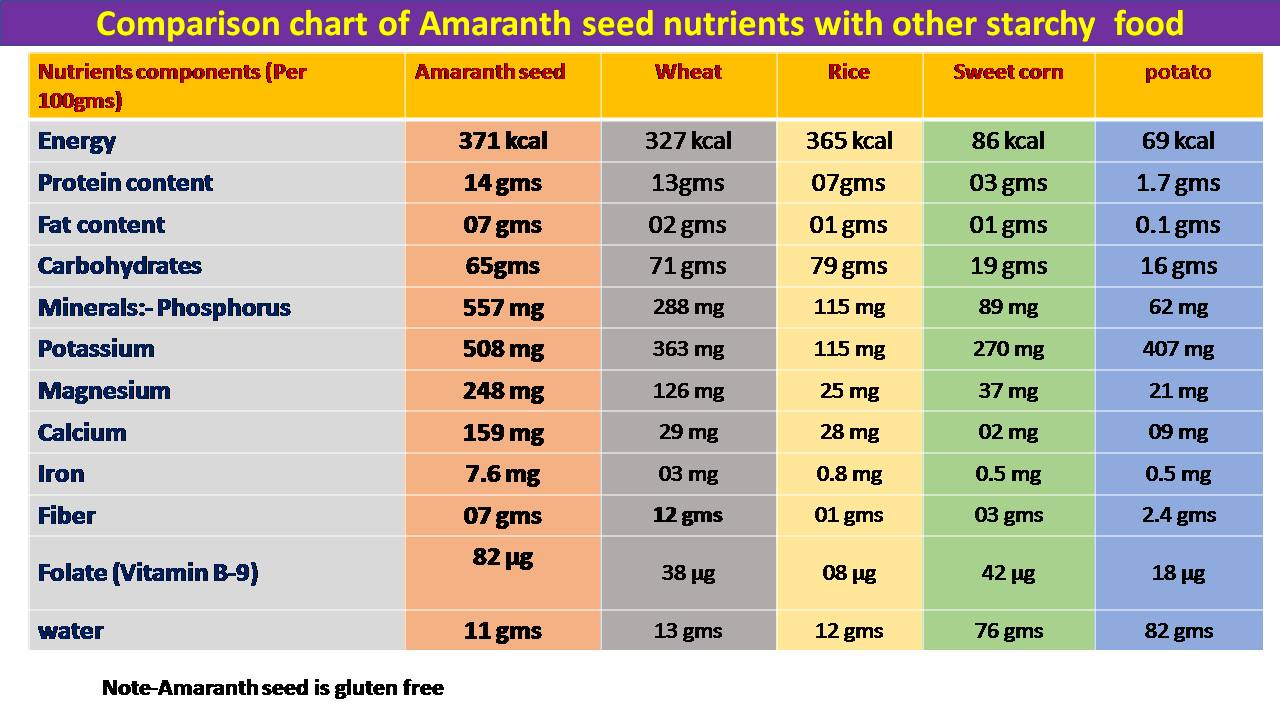
Nutritional value of amaranth flour/Rajgira flour (100gms) in approx value :-
- Energy:- 320 kcal
- Fat- 02 gms
- Protein- 14 gms
- Carbohydrate- 61 gms
- Fibre-10 gms
- Iron- 11 mg
- Phosphorus- 398 mg
- Calcium- 510 mg
Ref:-
- Shodhganga
- Indian council of agricultural research-CCARI
- Indian institute of vegetable research, Varanasi (UP)
- Whole grain council.org
- Science direct
- Researchgate
- Healtline.com
- Lipinepublisher.com
- Agrifarming.in
- Onlineliberary.wiley.com
- NDTV Food
- Wikipedia
- Amazon.in
